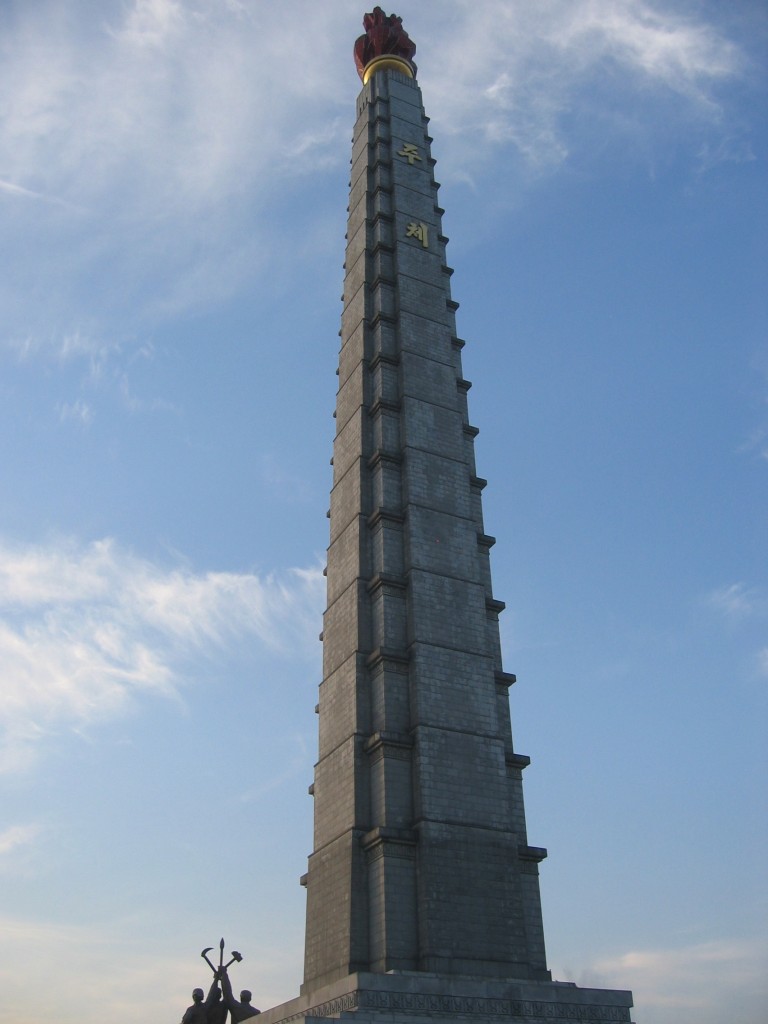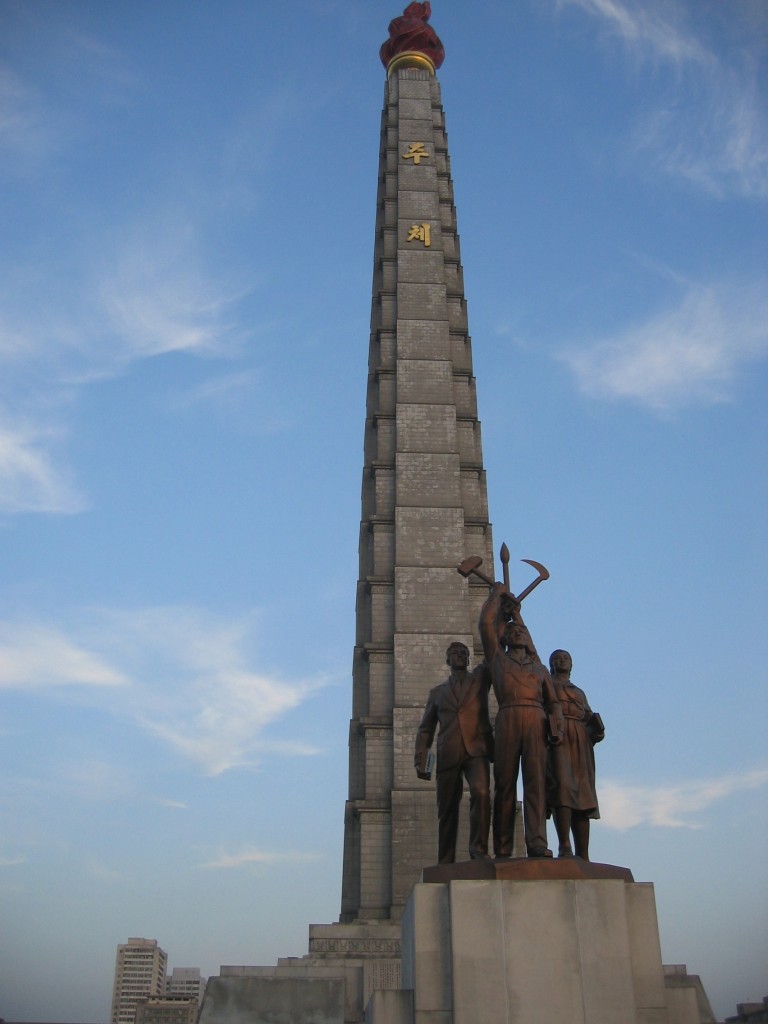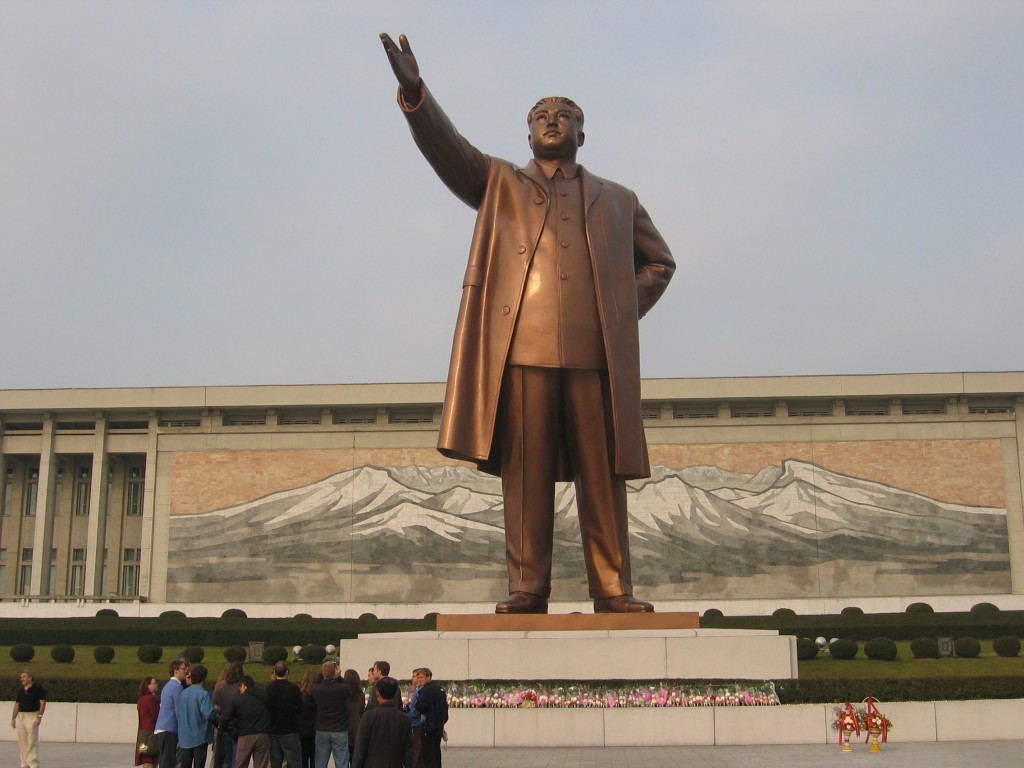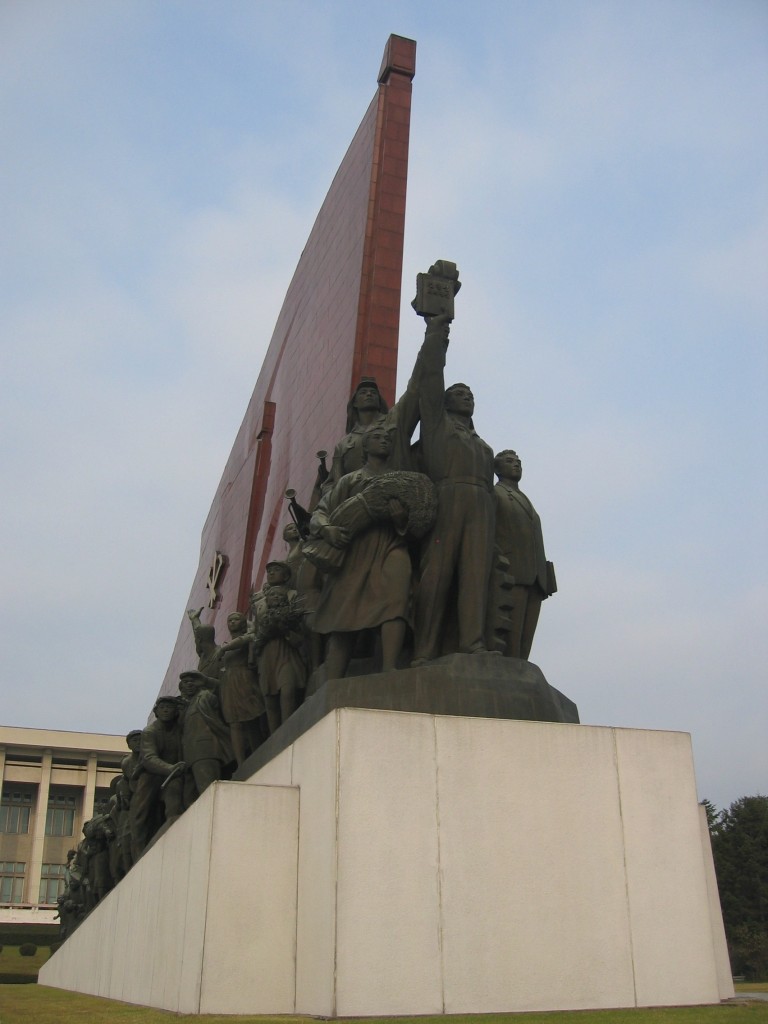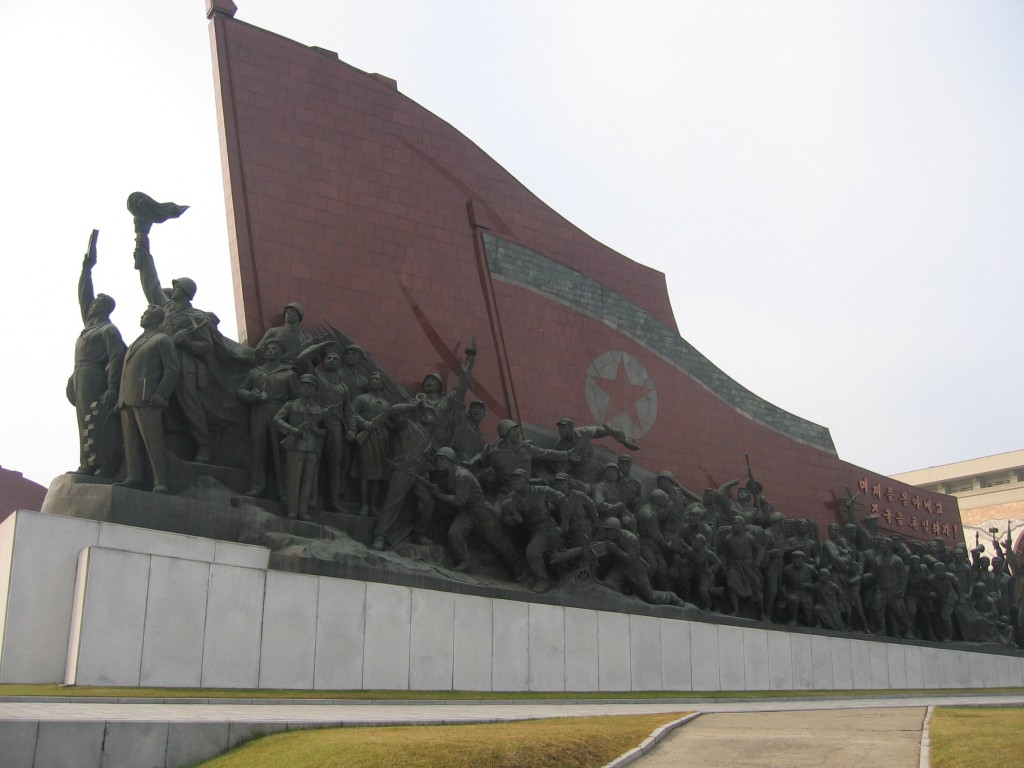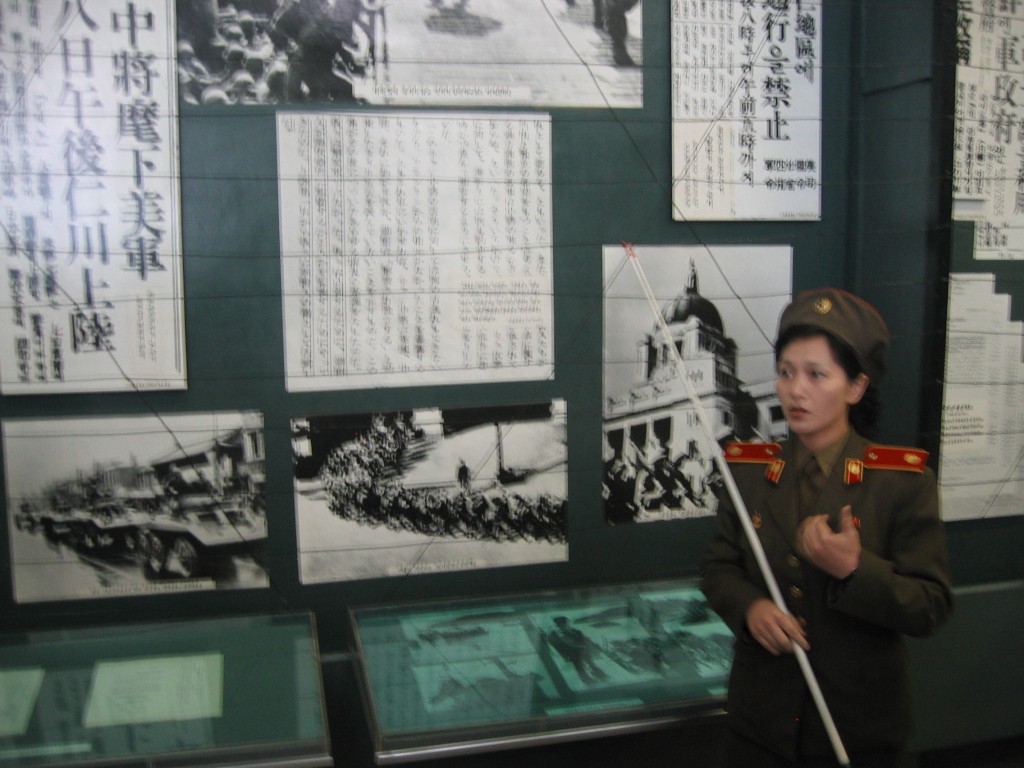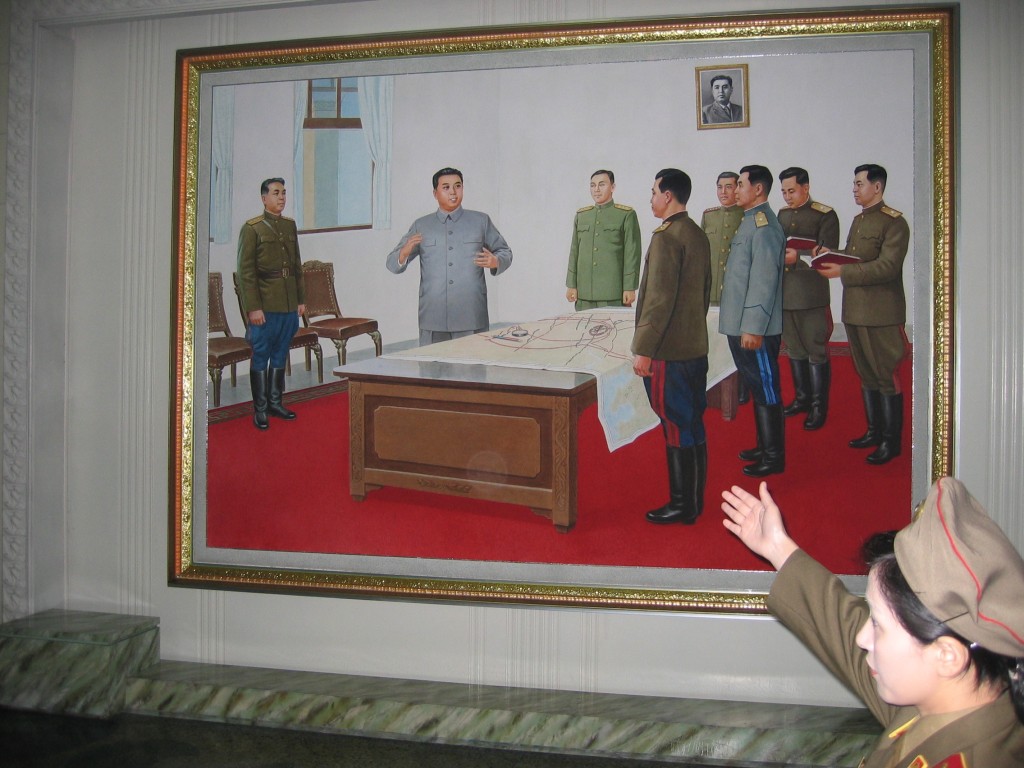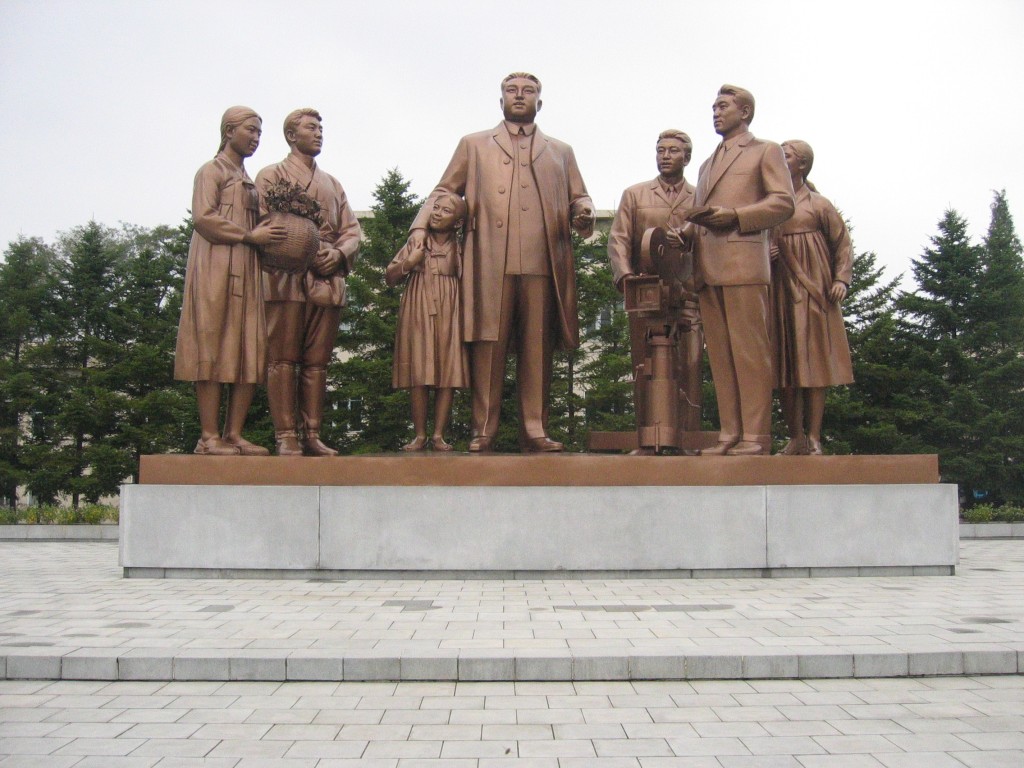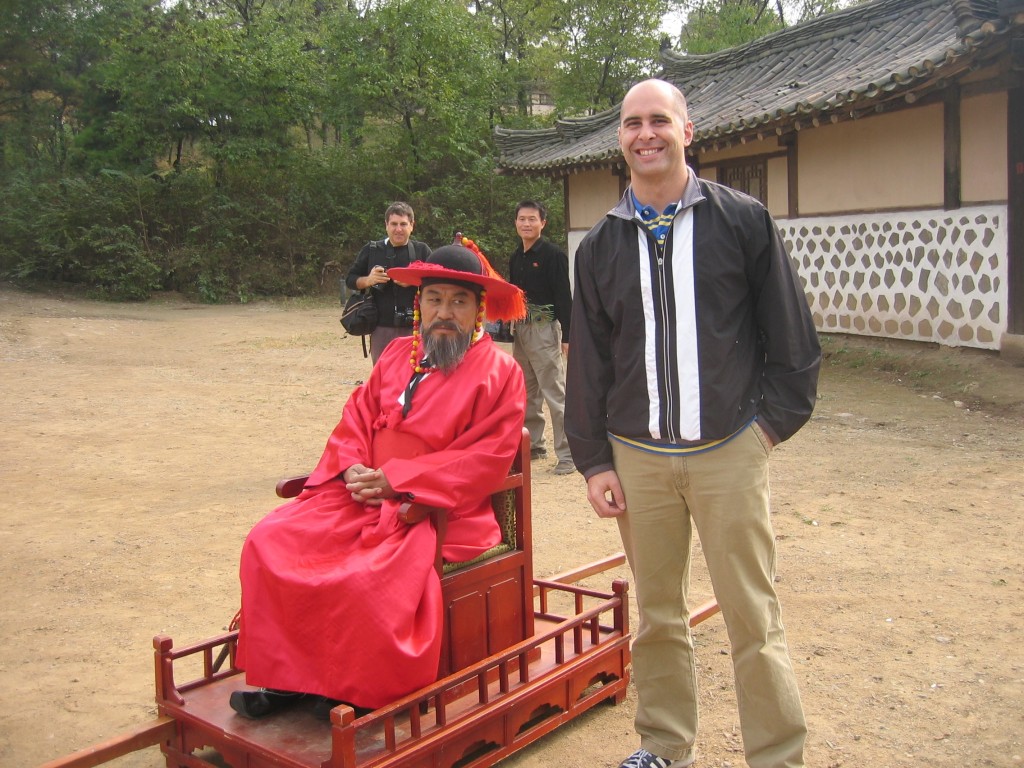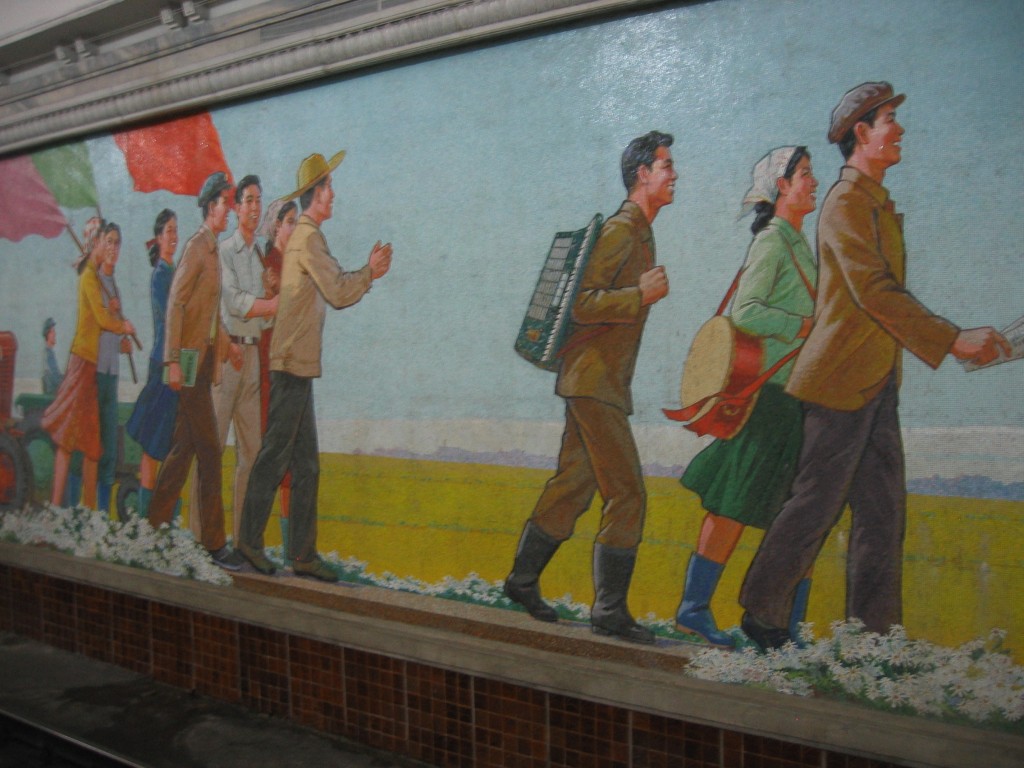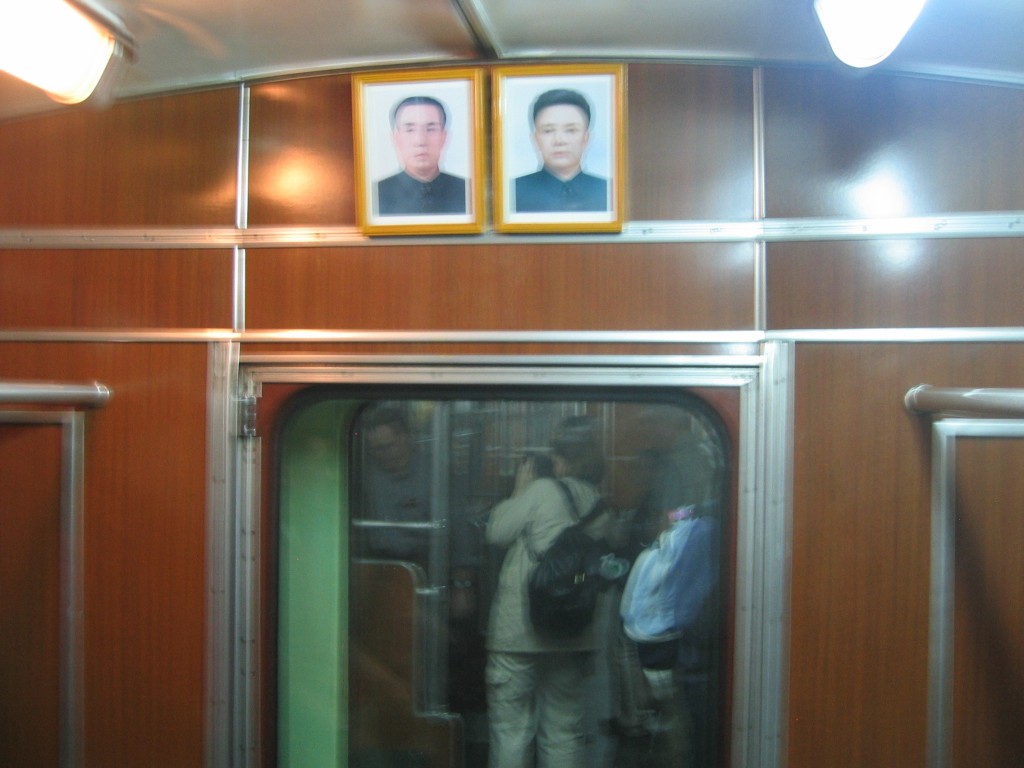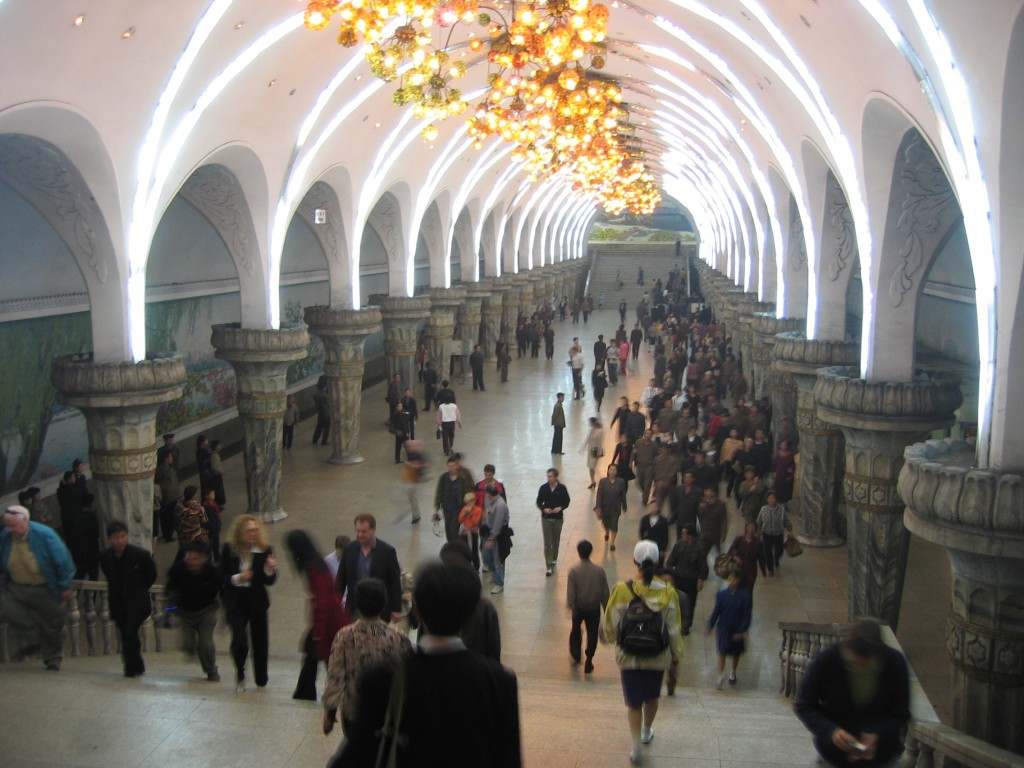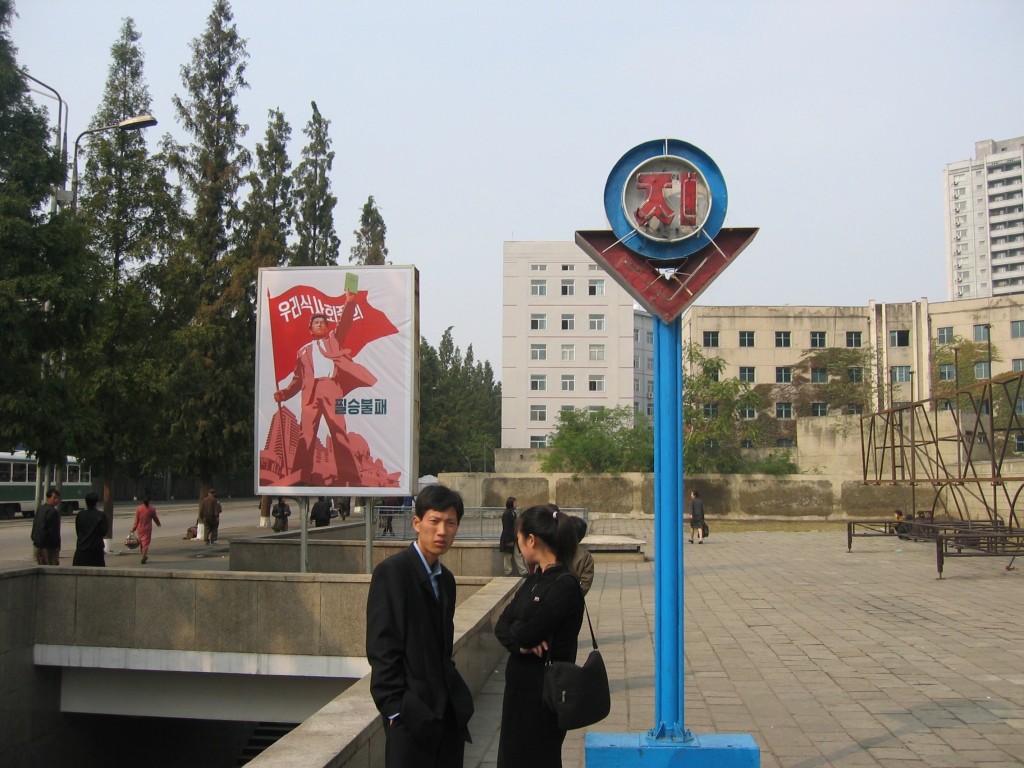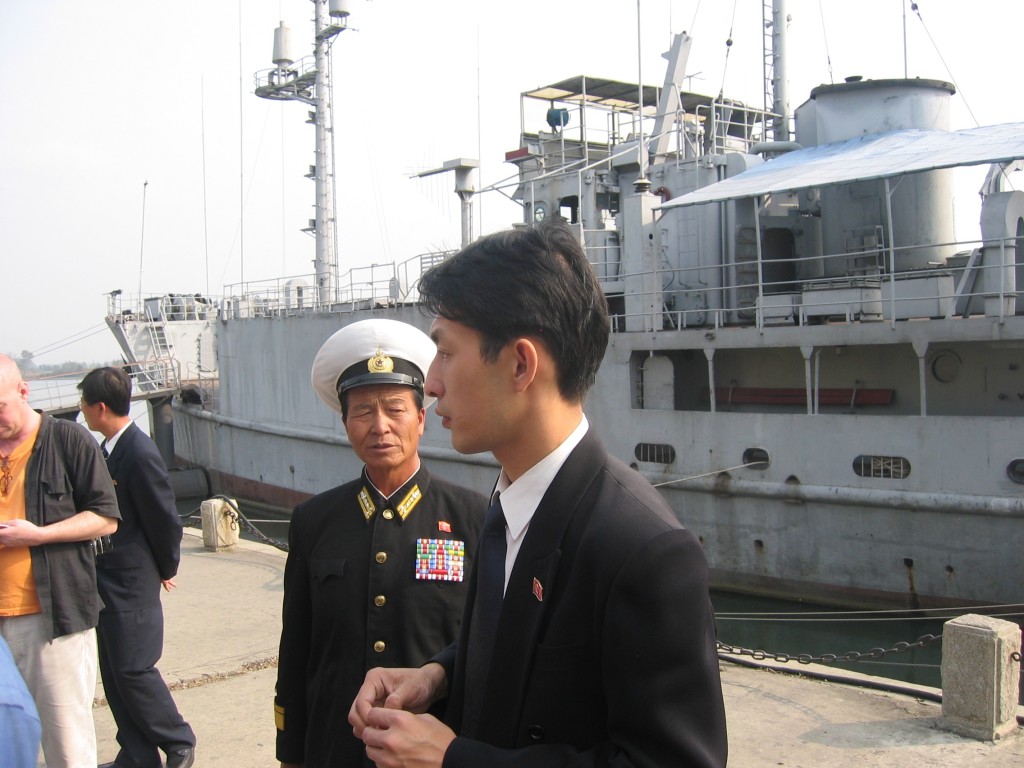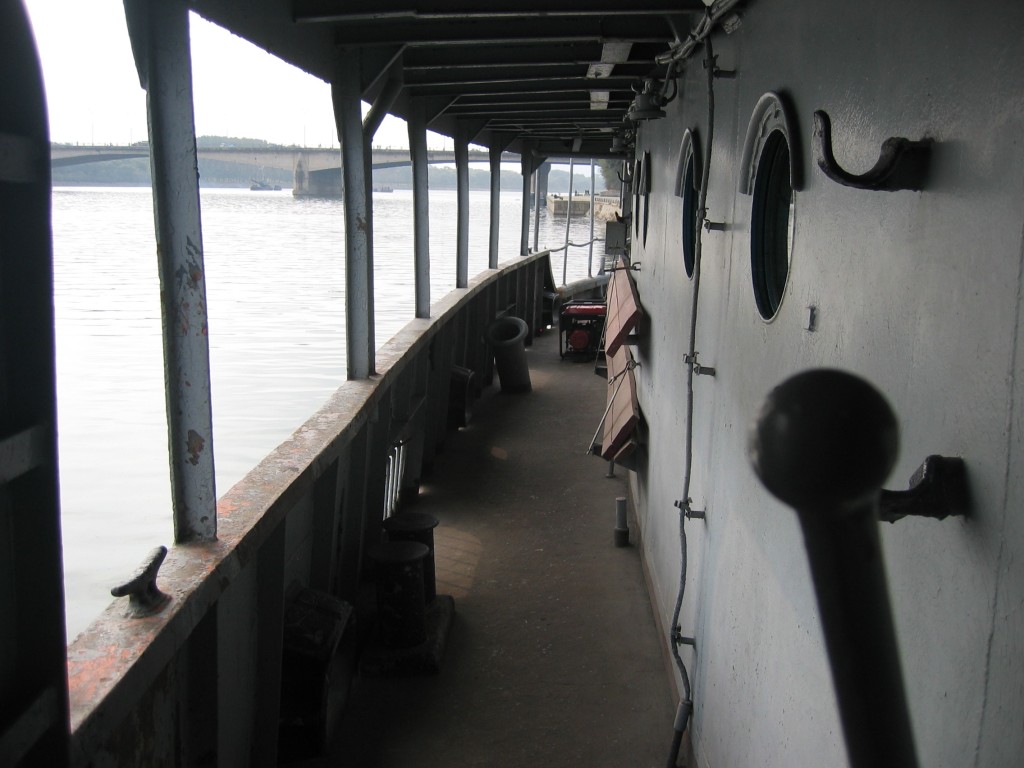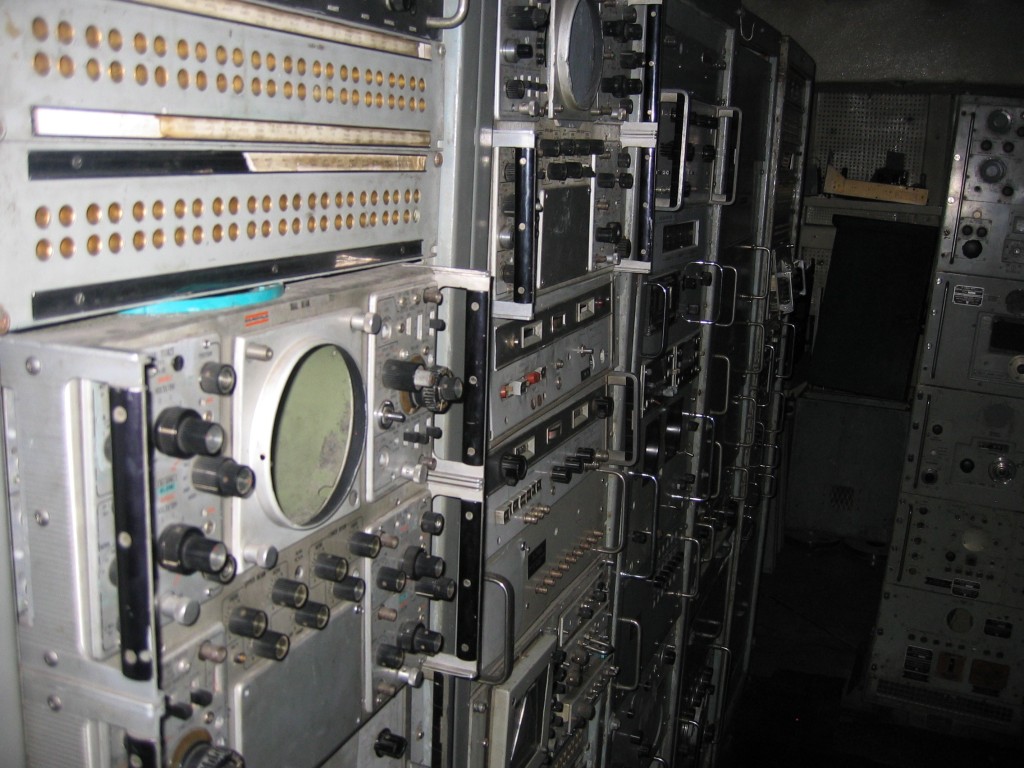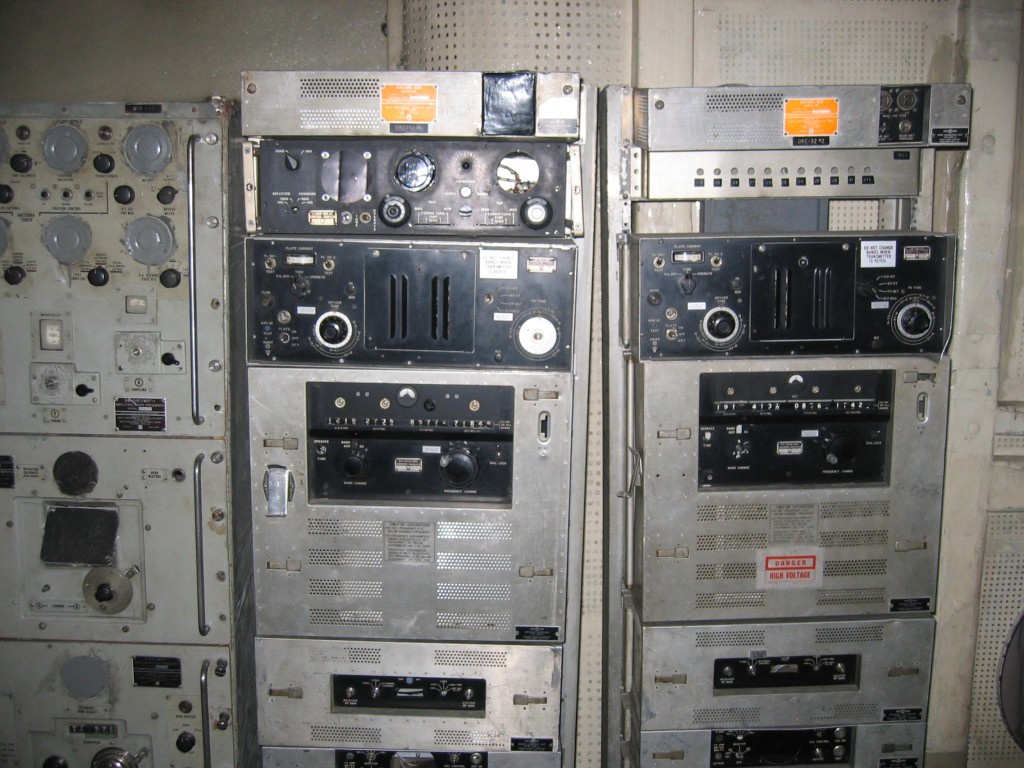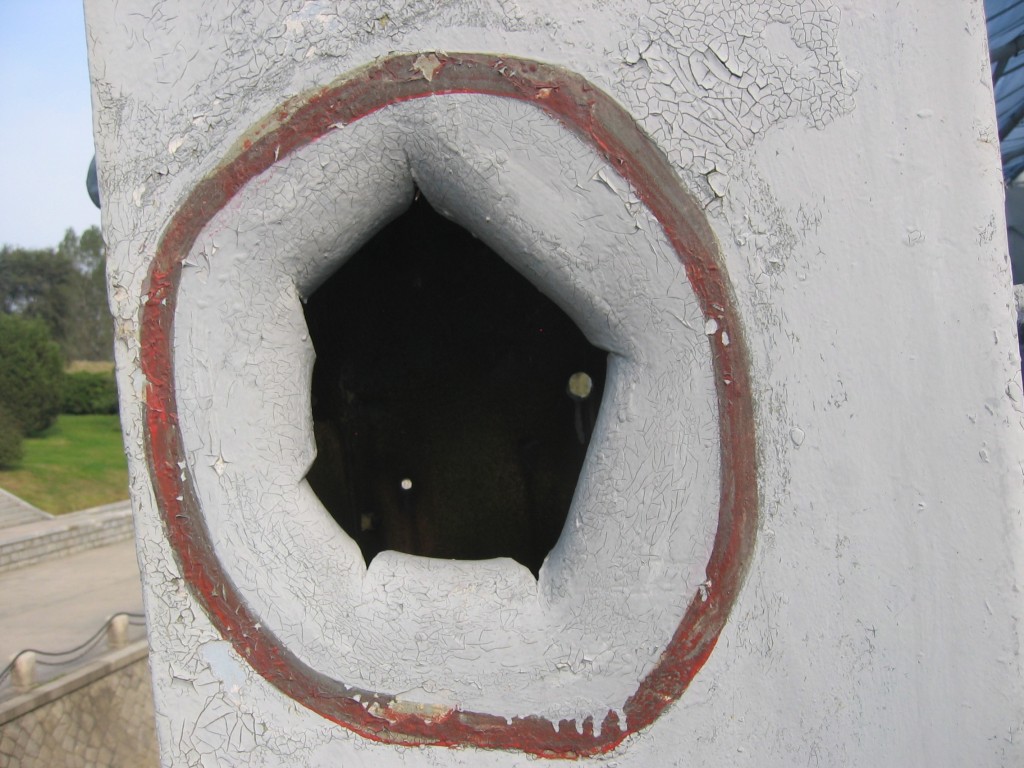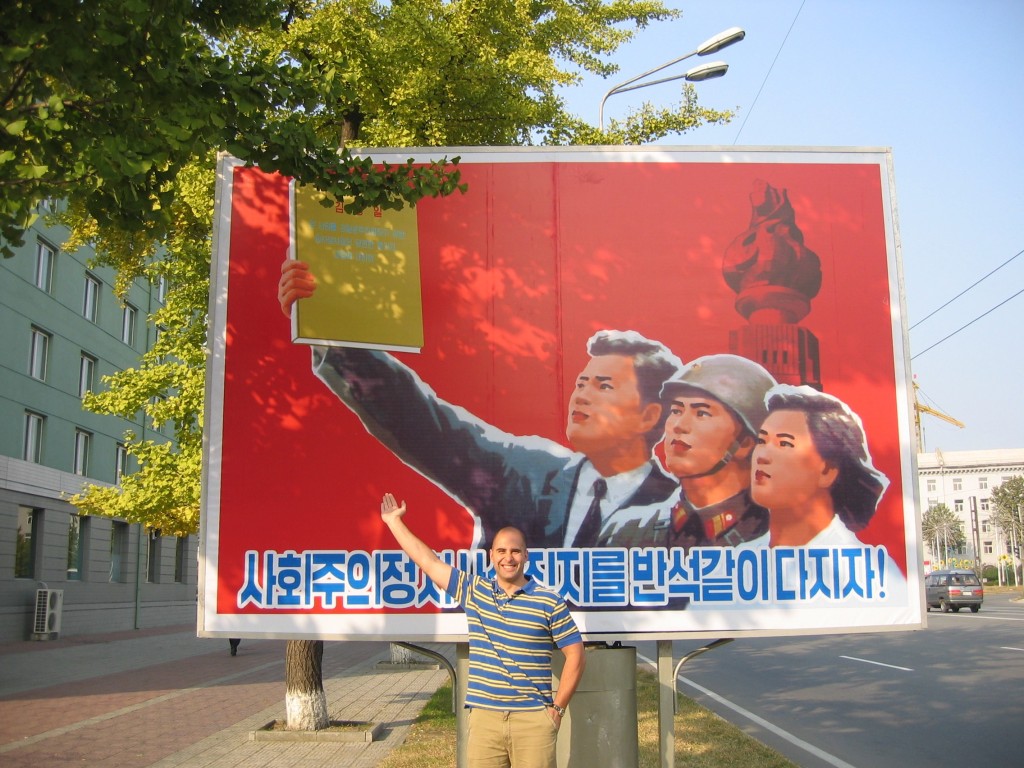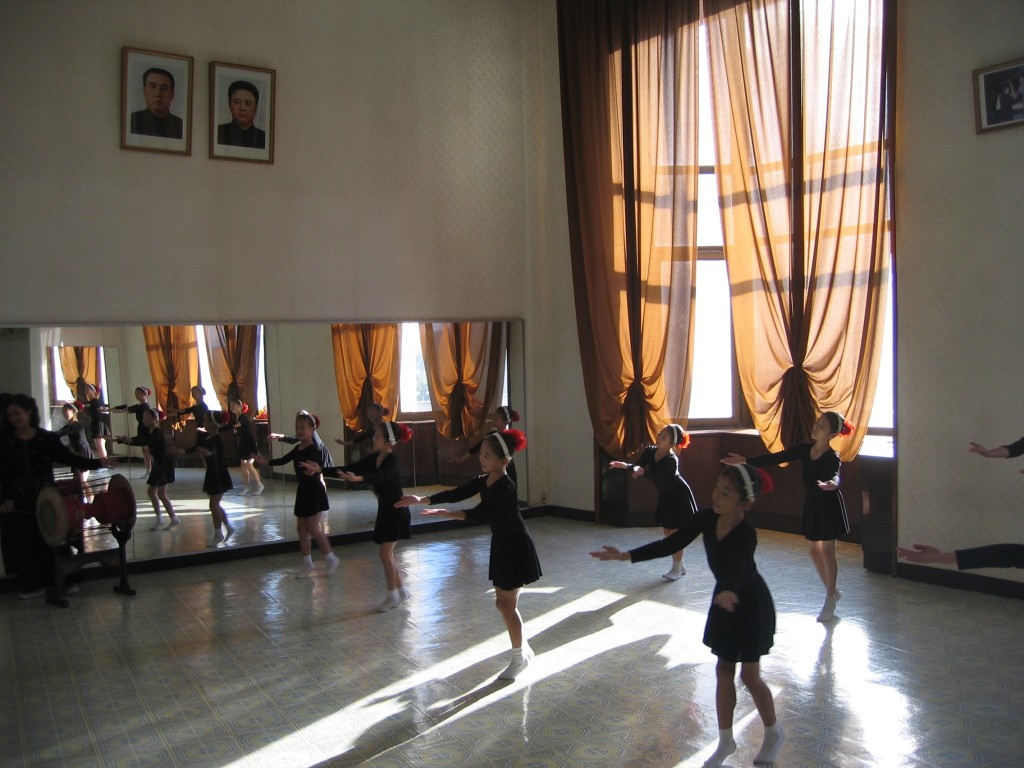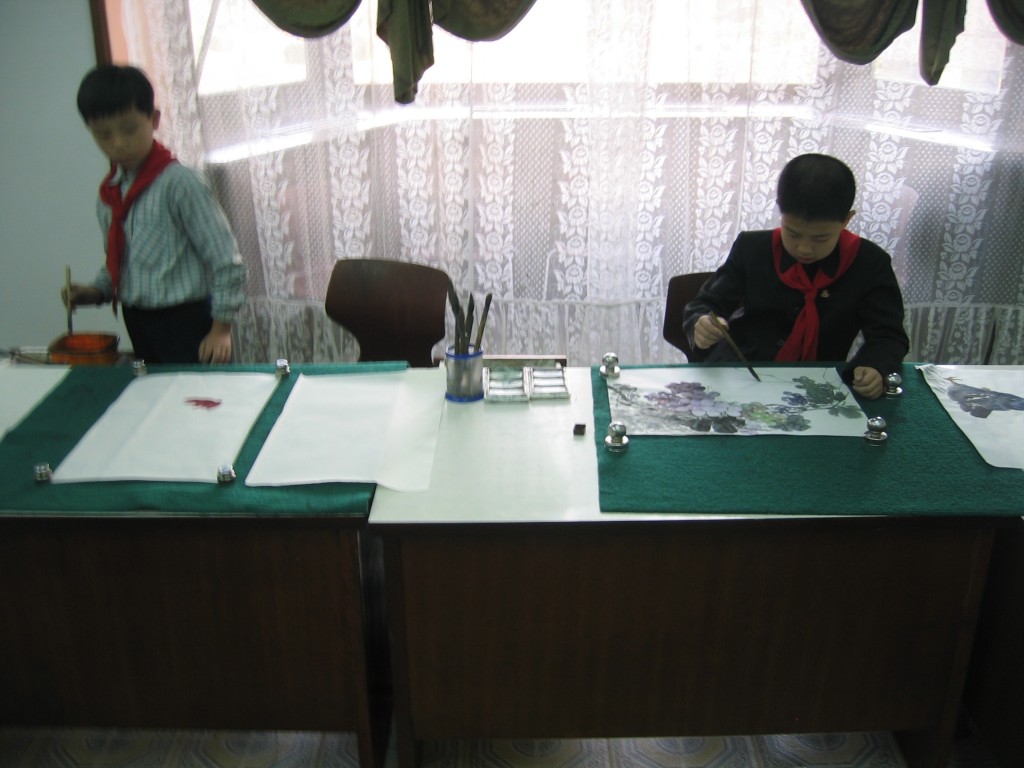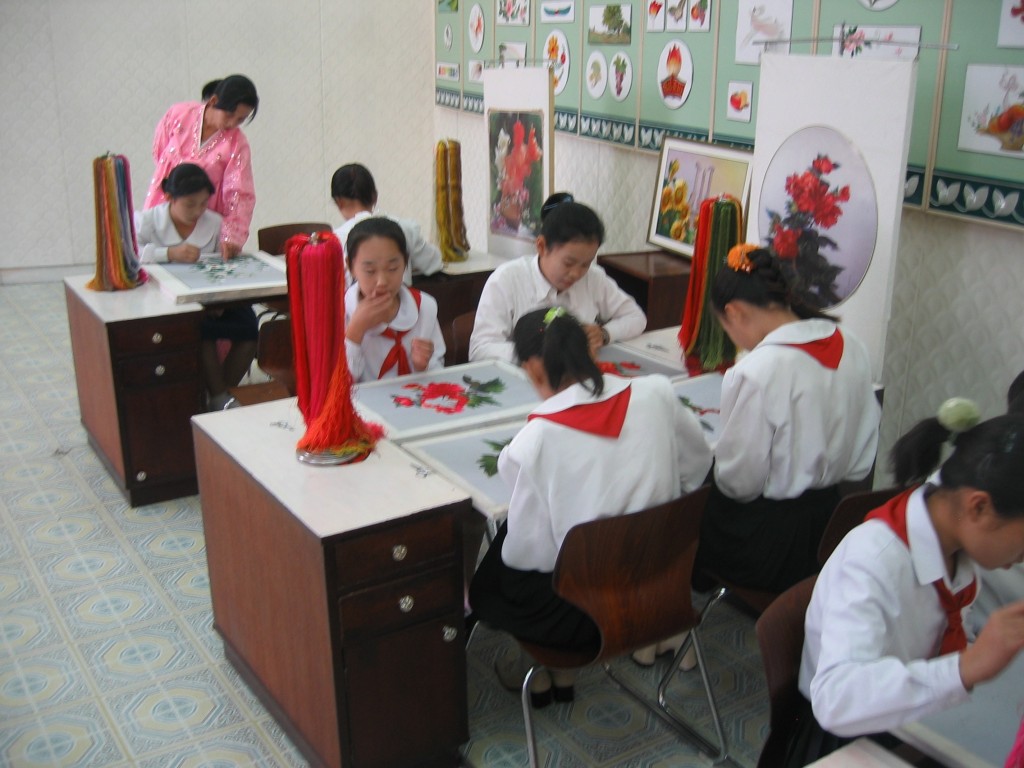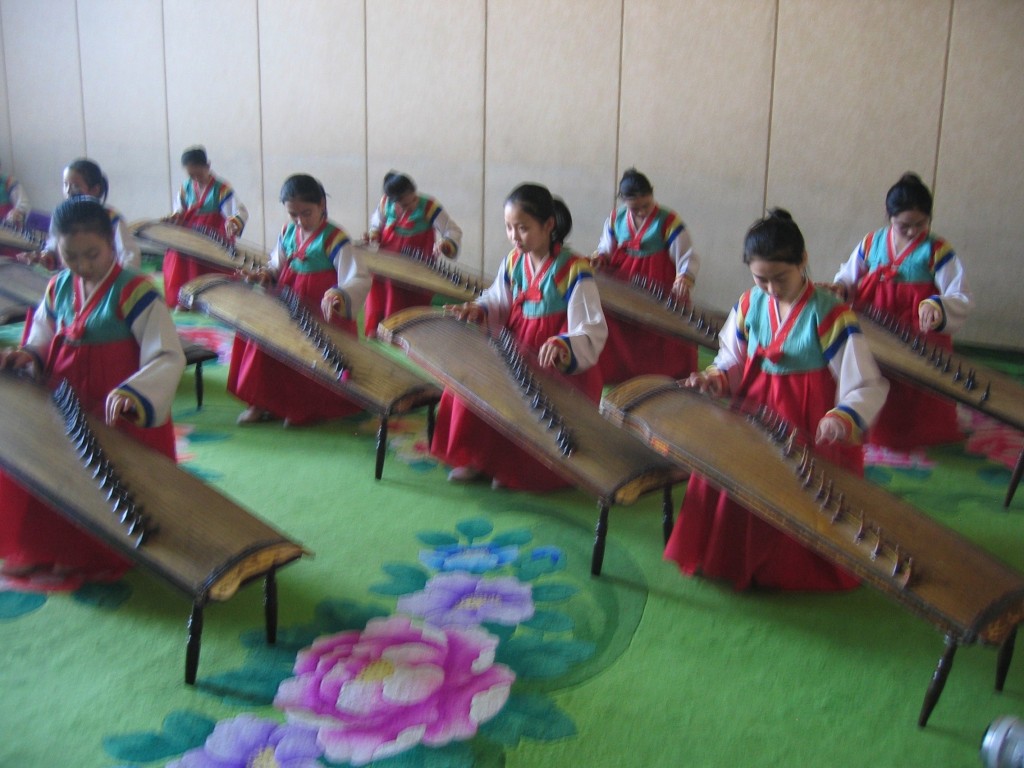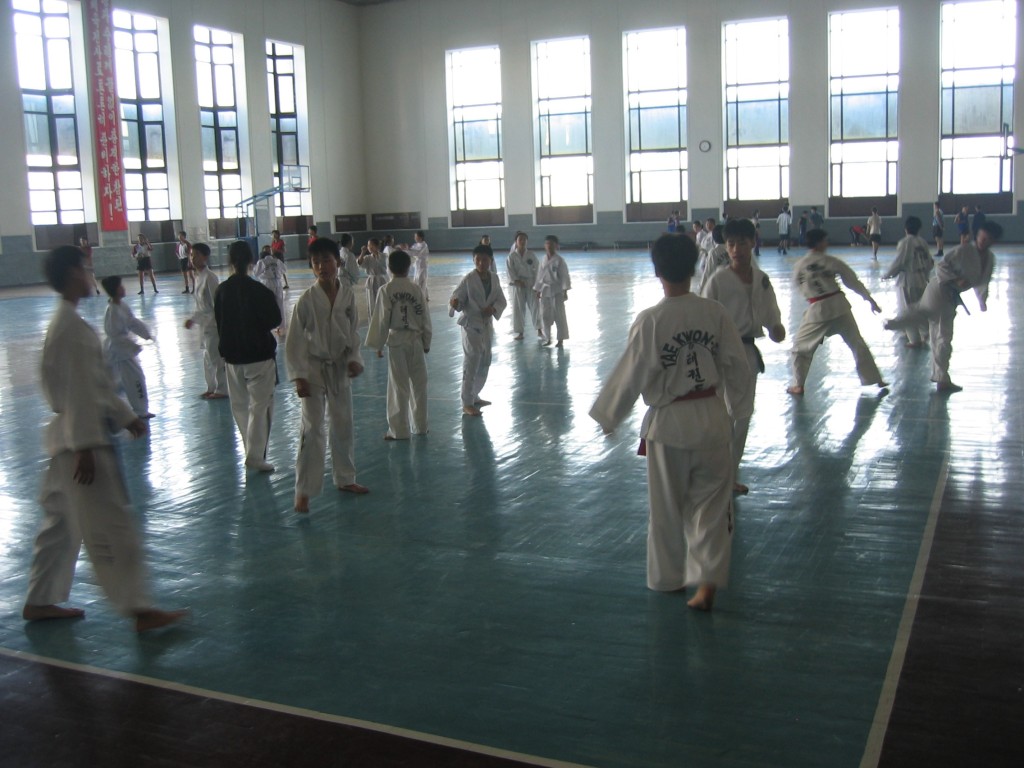Heading back to Pyongyang from Kaesong and the DMZ, we stopped at the Arch of Reunification for photos. It was built in 2001, and has two women (one representing North Korea, one South Korea) unifying in the middle of the aptly named Reunification Highway:
Our next stop was the Juche Tower. Juche is the name given to the ideology promoted by Kim Il-Sung of self-reliance. It’s considered by many North Koreans to be Kim Il-Sung’s great contribution to international philosophy…so of course it needs its own tower to commemorate it! It contains 25,550 blocks, one for each day of Kim Il-Sung’s life. Did I mention yet that the North Koreans kind of hit you over the head with symbolism? Standing 560 feet tall, the Juche Tower is also (coincidentally? NOT!) just a couple of feet taller than the Washington Monument, which it was supposedly modeled on. You can also see the Workers’ Party Monument near the base:
We were allowed to go up the tower to the observation deck, just below the flame. Hazy view of Pyongyang:
Juche Tower and the Workers’ Party Monument:
The Juche Tower and Workers Party Monument – three figures, one with a hammer (representing a worker), one with a writing brush (representing the working class intellectual), and one with a sickle (representing the peasant/farmer):
The next morning began to the Monument to Party founding. Again, the hammer, sickle, and writing brush:
Nearby propaganda to the Great Leader:
Next up was Mansudae, featuring a 20 meter high statue of Kim Il Sung. Notice the flowers at the base. You are not required, but it is expected, that you buy flowers from a nearby vendor and place them at the base and bow deeply in respect. Also worth nothing, all photos of the statue must contain the entire statue. No cutting off the head or body…and yes, your guides will check. Guess they haven’t heard about photoshop later on! It’s important to note that after Kim Jong-Il died in 2011, a statue of him was placed next to his father, but back when I visited in 2005 only Kim Il-Sung was hanging out:
Nearby is the Socialist Revolution Monument. It’s over 60 feet high, and the figures are nearly 15 feet each:
Next stop was the Korean War Museum. Our guides actually seemed a bit nervous about this, because it was the first time they would be taking Americans through the museum. They quickly warmed up, however, and took great delight in telling us all the ways they had defeated America. The museum’s tour guide pointing something out to us:
Describing all the great victories of North Korea:
Yak-18 aircraft from the war, with a new and improved museum-worthy paintjob:
Painting of the great General Kim Il Sung directing the war:
Outside the window of the museum was able to get this shot of the Ryugyong Hotel. We were strictly told no pictures were allowed of it, probably because it was started and never completed…supposedly because they found major architectural mistakes that made it unsafe to inhabit. Rumour is it could collapse at any time…other rumours say they just ran out of money. In 2008 construction actually started up again, and in 2011 they finally finished the exterior, but it still isn’t open. In 2012 the international Kempinski chain announced the hotel would finally open, but it never did…
At the entrance to the North Korean Film Studios…notice the movie camera next to the Great Leader:
Supposedly it was a great honour that I got to pose with this famous actor making a film about China:
Next up was a ride on the Pyongyang Metro. Surprisingly, we weren’t too restricted with photos, but we were only allowed to ride from one station to the next station a stop away. A map of the system:
Entering the station and headed down the escalator:
Entering the platform area, where the train was conveniently waiting for us, but no passengers really were, except for a few which had been creatively staged:
Mural in the station:
Station attendant, to escort us onto our train:
Our group (the only people in the station) standing around taking photos, while our train conveniently waited for us:
Inside the train car, with the Dear Leader and Great Leader watching over us:
Our exit station, one stop away, which actually had many more North Koreans in it…guess they hadn’t had time to completely stage this one or something:
Exit from the metro station:
Next stop was the USS Pueblo, a US Navy ship captured by North Korea in 1968, which they now proudly show off to tourists. A member of the North Korean navy was our guide:
Entering the ship:
Communications room:
Bullet hole in the ship:
On the way to the birthplace of Kim Il Sung we stopped, and I made a point to be inspired by local propaganda:
Next up was the birthplace of Kim Il Sung, significantly upgraded and now a museum. There were actually many “real” North Koreans visiting, as well as school groups. None dared get anywhere near us, however:
Final stop of the afternoon was the Pyongyang Childrens’ Palace. Every city more or less has a childrens’ palace, but the one in Pyongyang is the showcase for the nation:
Children in a dance class, watched over by their leaders:
Surprisingly impressive aquatic centre:
Accordion class?
Drawing/painting class:
Embroidery class:
Traditional Korean instruments. Based on the uniforms, this was clearly a performance for the tourists:
Lastly, we were taken to a karate class:
Unfortunately, this was all the pics I got because the rest were lost on the deleted memory card. We were taken to a childrens’ orchestra performance that seemed to go on forever, and finally to a last night celebration dinner at a duck restaurant. I remember our guides being super excited about this, because it was known to be one of the best restaurants in North Korea. Unfortunately, I found it barely edible because the duck was almost all skin and fat, and almost no meat. I can understand this being a big deal in a society where meat of any sort was rare, but by this point in the trip we were largely living on beer and bread. It raised the question of if this was the “best” North Korea had to offer to the first American tourists, you had to wonder just how hard the average citizen had it.
After dinner, we were taken to the Yanggakdo Hotel, which is bigger than our hotel and sits on an island in the middle of a river…so they can put the drawbridge up at night and strand you on the island. Quite surprising this wasn’t chosen for the Americans. It had a casino, nail salon, and supposedly bowling alley, but we weren’t allowed to use any of them. Instead, we were allowed to sit in the cafe in the lobby and drink imported Heinekens. Hah!
Eventually off to bed, just in time to fly out the next morning. It had been a whirlwind trip, but still amazed how much we were allowed to see!


